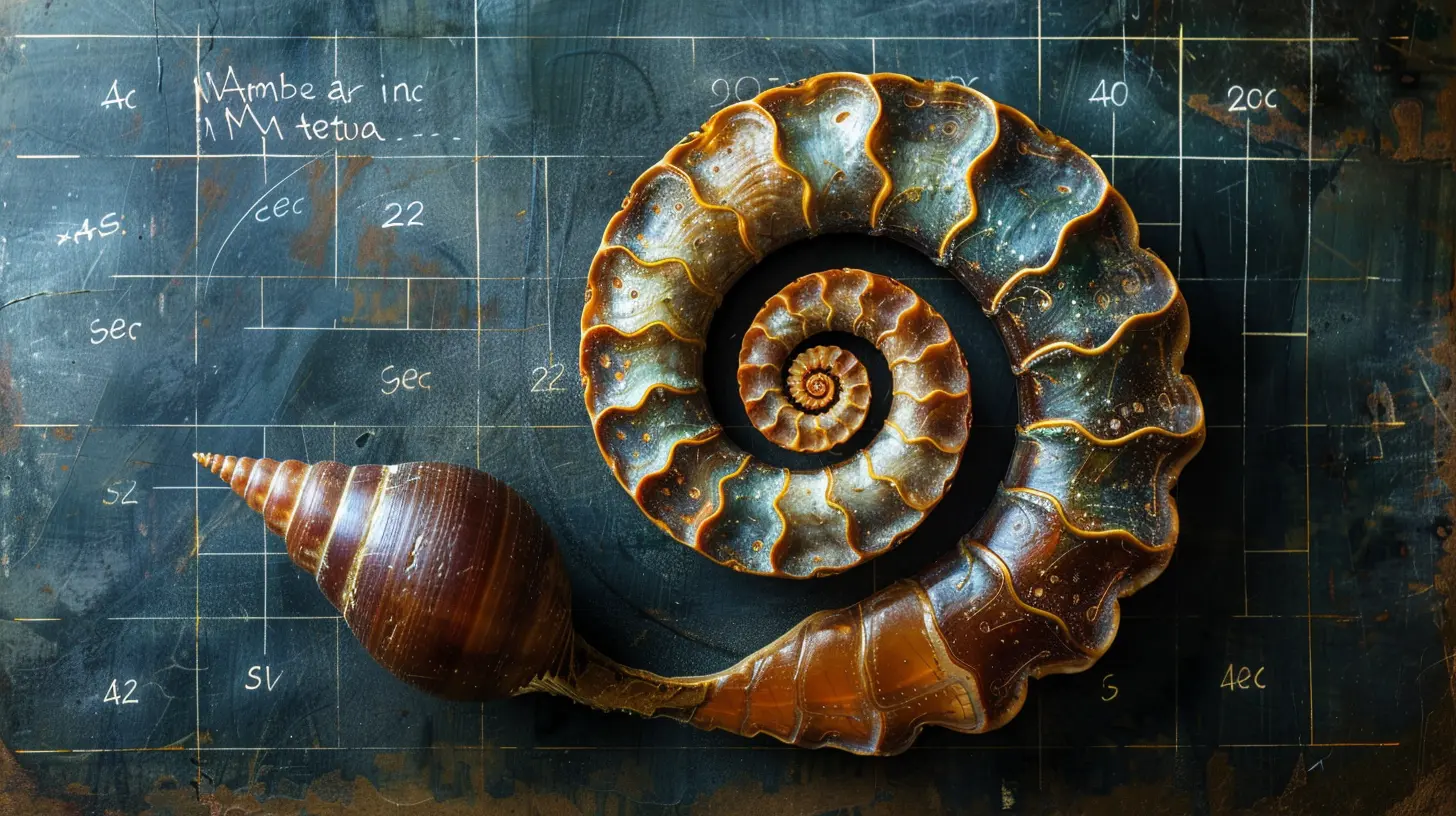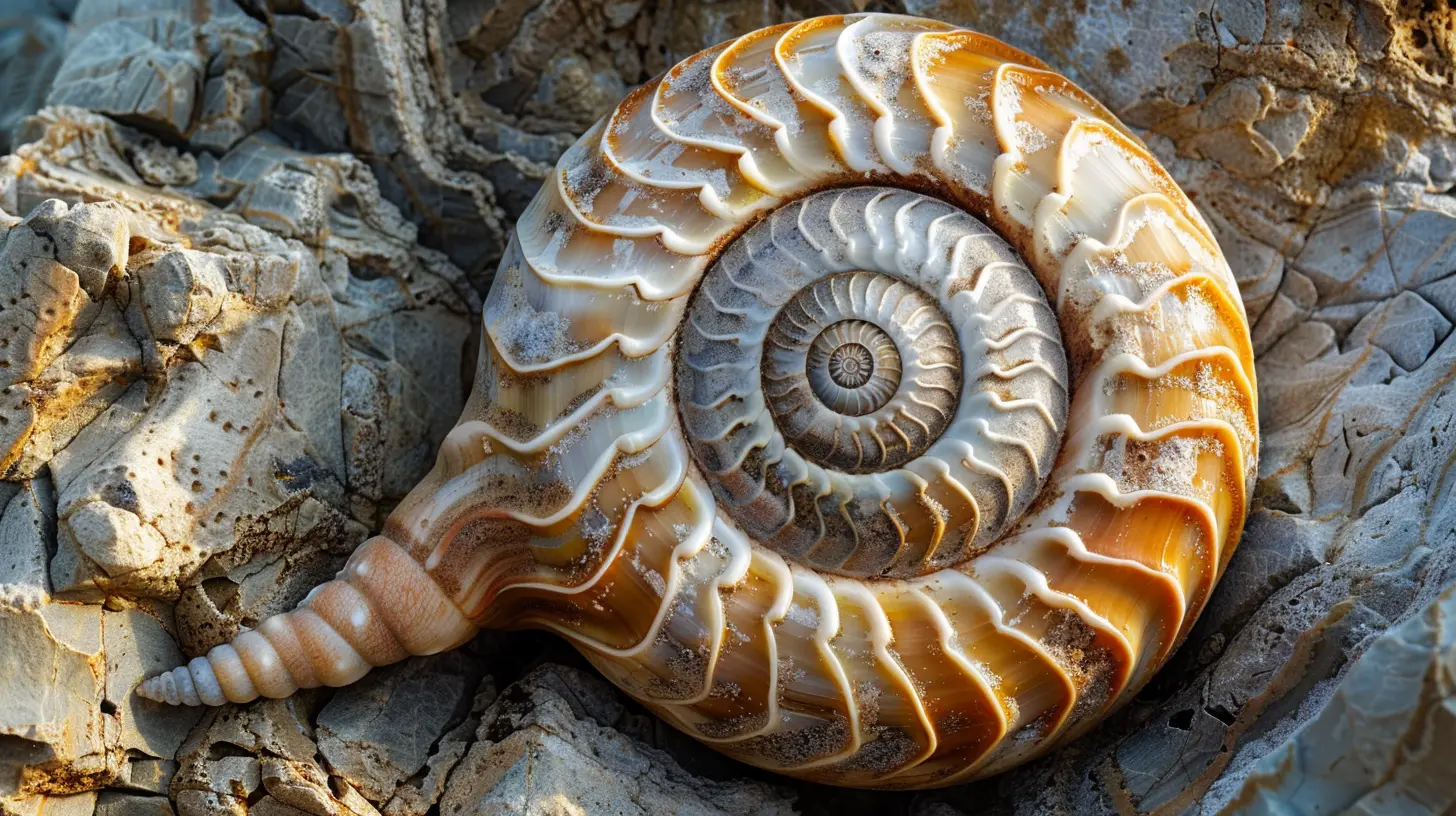Math in Nature: Discovering Patterns in the World Around Us
29 November 2024
When we think of math, our minds often wander to classrooms, textbooks, and maybe a bit of mental math when we're trying to calculate a tip at a restaurant. However, math is so much more than just numbers and equations on a chalkboard. It's a fundamental part of the natural world, hiding in plain sight. From the spirals of a seashell to the branching of trees, mathematics is the invisible artist behind nature’s most breathtaking designs.
In this article, we’ll explore how math manifests itself in nature, highlighting some of the most fascinating patterns that surround us every day. By the end of this journey, you might never look at a sunflower or a snowflake the same way again!

What is Mathematical Patterning?
Before we dive in, let's establish what we mean by "patterns" in a mathematical sense. Patterns are repeating arrangements or structures that follow a specific rule. In nature, these patterns can be visual (like the symmetry of a butterfly’s wings), numerical (like the Fibonacci sequence), or even behavioral (like the flocking of birds). These patterns are not random; they’re governed by mathematical principles that evolved to optimize efficiency, functionality, or beauty.The Role of Math in Nature
So, why does nature follow mathematical rules? Well, it’s all about optimization. Nature is efficient—plants, animals, and even weather systems have evolved to conserve energy, minimize waste, and maximize survival. Math offers a kind of blueprint that helps living organisms and systems thrive in their environments.For example, bees construct hexagonal honeycombs because the shape allows them to store the maximum amount of honey while using the least amount of wax. Isn’t that fascinating? This is just one example of how math is the language of nature.

The Fibonacci Sequence: Nature’s Number Code
One of the most famous examples of math in nature is the Fibonacci sequence. If you need a quick refresher, the Fibonacci sequence starts with 0 and 1, and each subsequent number is the sum of the two preceding numbers (0, 1, 1, 2, 3, 5, 8, 13, 21, and so on). This sequence crops up all over the natural world, sometimes in the most unexpected places.The Spiral of Life
Ever noticed how snail shells, hurricanes, and even galaxies seem to spiral? That’s the Fibonacci sequence at work. The arrangement of seeds in a sunflower, the scales of a pinecone, and even the structure of our DNA follow the sequence.These spirals follow a precise mathematical formula known as the Golden Ratio (approximately 1.618). When any two consecutive Fibonacci numbers are divided, the result tends to approximate this golden ratio. This ratio appears so frequently in nature that it’s sometimes called "nature's number."
Sunflowers and Pinecones
Let’s take sunflowers as an example. The seeds in a sunflower head are arranged in spirals that follow the Fibonacci sequence. Why? It’s the most efficient way to pack seeds into a small space. The same pattern can be seen in pinecones, where the scales are arranged in spirals going in opposite directions, with the number of spirals following—you guessed it—the Fibonacci sequence.Isn’t it cool that such a simple numerical rule can dictate something as complex and beautiful as the arrangement of seeds or scales?

Symmetry: A Hidden Balance
Symmetry is another form of mathematical patterning that appears frequently in nature. It’s not just about aesthetics; symmetry often plays a functional role.Bilateral Symmetry
Most animals, including humans, exhibit bilateral symmetry—our bodies are essentially mirror images on the left and right sides. This symmetry helps in balance and movement. Imagine trying to walk with one leg twice the size of the other! Bilateral symmetry ensures that creatures can move efficiently and effectively.Radial Symmetry
Not all symmetry is bilateral, though. Radial symmetry is another common pattern in nature, especially among plants and some animals. Think of a starfish or a daisy. In both cases, the body (or flower) radiates out from a central point, creating a balanced, circular pattern.This kind of symmetry is not only visually pleasing but also functional. For example, the radial symmetry of a jellyfish helps it move through water more easily.

Fractals: The Geometry of Chaos
Another fascinating mathematical concept that appears in nature is fractals. A fractal is a complex pattern where every part of it looks like a smaller version of the whole. It’s a bit like those Russian nesting dolls, where each smaller doll is a miniature version of the larger one.Where to Find Fractals
Fractals are everywhere in nature. Look at a tree. The trunk splits into branches, which split into smaller branches, which split into even smaller branches, and so on. This repetitive, self-similar pattern is a fractal. The same is true for river networks, lightning bolts, and even the veins in a leaf.The Mathematics Behind Fractals
Fractals can be described by mathematical equations, specifically, recursive algorithms. The beauty of fractals is that they can be infinitely detailed. In nature, fractals allow for efficient transport of nutrients and energy. For example, the branching pattern of a tree maximizes the amount of sunlight each leaf can receive, while the fractal structure of your lungs helps to maximize the surface area for oxygen exchange.Tessellations: Nature’s Puzzle Pieces
A tessellation is a pattern made up of shapes that fit together perfectly without any gaps or overlaps, much like a jigsaw puzzle. In nature, tessellations show up in some surprising places.Honeycomb: Nature’s Architect
Bees are master builders. Honeycombs are made up of hexagonal cells that tessellate perfectly. Why hexagons? Well, of all the shapes that can tessellate—triangles, squares, and hexagons—the hexagon uses the least amount of material to create the largest amount of space. This means bees can store the most honey while using the least amount of wax.Crystals and Snowflakes
Snowflakes are another example of natural tessellations. Each snowflake is unique, but they all follow a hexagonal pattern due to the molecular structure of ice. As water freezes, the molecules naturally arrange themselves into a hexagonal lattice, creating the intricate patterns we see.Chaos Theory: The Mathematics of Unpredictability
Nature isn’t always neat and orderly. Sometimes it’s chaotic, but even chaos has its own mathematical rules. This is where chaos theory comes in. Chaos theory deals with systems that are highly sensitive to initial conditions—small changes can lead to vastly different outcomes. You may have heard this phenomenon referred to as the butterfly effect.Weather and Chaos
Weather patterns are a quintessential example of chaos theory in action. While we can predict weather trends, small changes in temperature or pressure can lead to vastly different outcomes, making long-term weather forecasting extremely difficult. Yet, even in this chaos, there are underlying mathematical principles at work.Animal Populations
Chaos theory also applies to the population dynamics of animals. In certain ecosystems, small fluctuations in the birth or death rates can lead to population booms or crashes. While these changes may seem unpredictable, they often follow mathematical models.Conclusion: The Beauty of Mathematical Patterns in Nature
The next time you step outside, take a moment to look around. Whether you’re gazing at the clouds, admiring the symmetry of a butterfly’s wings, or noticing the spirals in a sunflower, you’re witnessing math at work. These patterns aren’t just random; they’re the result of mathematical principles that have evolved over millions of years.Math is often seen as something abstract and removed from the real world, but in truth, it’s the very foundation of the natural world. From the smallest snowflake to the vast expanse of galaxies, math is the silent artist shaping our universe.
So, the next time someone asks, "When will I ever use math in real life?" just point them to the nearest tree, flower, or cloud. Because math isn’t just important—it’s everywhere.
all images in this post were generated using AI tools
Category:
Math SkillsAuthor:

Madeleine Newton
Discussion
rate this article
18 comments
Dixie Bishop
Nature's patterns inspire endless learning!
February 14, 2025 at 7:53 PM

Madeleine Newton
Absolutely! Nature's intricate patterns are a testament to the beauty of mathematics, inviting us to explore and learn continuously.
Riven McGinn
Love how math reveals nature's beauty! Patterns are everywhere!
January 31, 2025 at 9:19 PM

Madeleine Newton
Thank you! I completely agree—math truly helps us appreciate the intricate patterns that define our natural world.
Flynn McQuaid
Exploring nature's patterns reveals the beauty and complexity of mathematics.
January 27, 2025 at 12:22 PM

Madeleine Newton
Absolutely! Nature's patterns beautifully illustrate how mathematics underlies the world, revealing intricate connections that inspire awe and deeper understanding.
Storm Bailey
This article beautifully highlights the connection between mathematics and the natural world. By exploring patterns in nature, we can enhance our understanding of both disciplines. It's inspiring to see how math can help us appreciate the intricacies of the environment around us. Thank you for sharing this insight!
January 23, 2025 at 4:11 AM

Madeleine Newton
Thank you for your thoughtful comment! I'm glad you found the connection between math and nature inspiring. It truly opens up new perspectives on both fields.
Adeline Lopez
Nature's patterns reveal the intricate relationship between mathematics and existence, inviting us to explore how numbers and shapes shape our understanding of the universe.
January 16, 2025 at 4:59 AM

Madeleine Newton
Thank you for your insightful comment! Indeed, the interplay between mathematics and nature unveils profound truths about our universe and enriches our exploration of its patterns.
Gisela Hudson
This article beautifully highlights the intrinsic connection between mathematics and nature. Exploring patterns in natural phenomena not only enhances our understanding of mathematical concepts but also fosters a deeper appreciation for the world around us. It’s a reminder that math is not just abstract; it’s woven into the fabric of life.
January 10, 2025 at 7:19 PM

Madeleine Newton
Thank you for your thoughtful comment! I'm glad you found the connection between mathematics and nature so inspiring. It's fascinating how deeply intertwined they are!
Dana McAdams
Exploring math in nature reveals profound connections between seemingly disparate disciplines. The patterns in natural phenomena, from Fibonacci sequences in flowers to fractals in coastlines, not only enhance our understanding of the universe but also inspire creativity and critical thinking, bridging the gap between science and art.
January 3, 2025 at 12:46 PM

Madeleine Newton
Thank you for highlighting the beautiful interplay between math and nature! It's amazing how these patterns not only deepen our understanding but also inspire creativity across disciplines.
Zephyros Nelson
In nature’s embrace, math takes flight, Patterns weave through day and night. From petals to galaxies, symmetry sings, In whispered secrets, the universe clings. Explore the rhythms, let wonder ignite, For in every equation, the world feels right. Nature’s heart beats in numbers bright.
December 29, 2024 at 3:54 AM

Madeleine Newton
Thank you for beautifully capturing the essence of math in nature! Your poem perfectly reflects how patterns and symmetry are woven into the fabric of our universe, inspiring us to explore and appreciate the wonders around us.
Rivera McCallum
Embrace the beauty of math in nature—every pattern reveals the universe's secrets waiting to be discovered!
December 25, 2024 at 5:46 AM

Madeleine Newton
Thank you! It's fascinating how math uncovers the hidden patterns that shape our natural world and deepen our understanding of the universe.
Petra Alvarez
This article beautifully illustrates the intricate connection between mathematics and nature. The exploration of patterns not only enhances our understanding of the natural world but also inspires a deeper appreciation for mathematical concepts. Thank you for highlighting such a fascinating and essential topic in education!
December 22, 2024 at 3:44 AM

Madeleine Newton
Thank you for your insightful comment! I'm glad you found the connection between mathematics and nature so inspiring.
Alisha McCallum
Great insights on nature's patterns!
December 18, 2024 at 1:03 PM

Madeleine Newton
Thank you! I'm glad you found it insightful!
Astraea Palmer
This article brilliantly highlights the intrinsic connection between mathematics and nature, showcasing how mathematical patterns, like Fibonacci sequences and fractals, manifest in the natural world. Such insights not only deepen our understanding of nature but also enhance our appreciation for its complexities.
December 13, 2024 at 9:25 PM

Madeleine Newton
Thank you for your thoughtful comment! I'm glad you found the connection between mathematics and nature inspiring.
Ella Ruiz
This article beautifully highlights the fascinating connection between mathematics and nature. It’s wonderful to see how patterns in our environment can inspire curiosity and deepen our understanding!
December 11, 2024 at 12:06 PM

Madeleine Newton
Thank you! I'm glad you enjoyed the article and its exploration of the inspiring connections between math and the natural world. Your appreciation means a lot!
Cassidy Shaffer
Beautifully written! Embracing math in nature truly enhances our understanding and appreciation of the world around us!
December 7, 2024 at 3:19 AM

Madeleine Newton
Thank you! I'm glad you enjoyed it and share the appreciation for the beauty of math in nature!
Sloane McBride
Who knew math could be so thrilling? Next, a rollercoaster ride through calculus!
December 1, 2024 at 1:57 PM

Madeleine Newton
I'm glad you found it thrilling! Math truly can take us on an exciting journey—just like calculus reveals nature's intricate patterns!
Hunter Cox
This article beautifully highlights the intrinsic connection between math and nature. Exploring patterns around us not only enhances our understanding but also deepens our appreciation for the world.
November 30, 2024 at 12:09 PM

Madeleine Newton
Thank you! I'm glad you appreciated the connection between math and nature—it's truly fascinating how patterns enrich our understanding of the world.
Jackson Reyes
This article beautifully illustrates the intrinsic connection between mathematics and the natural world. By highlighting patterns such as Fibonacci sequences and fractals, it emphasizes how math unveils the underlying order of nature. Such insights not only enhance our appreciation of nature but also inspire deeper curiosity in mathematical exploration.
November 29, 2024 at 12:50 PM

Madeleine Newton
Thank you for your insightful comment! I'm glad you found the connection between mathematics and nature inspiring. It’s amazing how these patterns deepen our understanding and appreciation of the world around us.
Cassian Clarke
Fascinating exploration of nature's mathematical beauty and patterns!
November 29, 2024 at 3:46 AM

Madeleine Newton
Thank you! I'm glad you found the exploration of nature's mathematical beauty engaging.
MORE POSTS

Building Adaptability: Thriving in an Ever-Changing World

The Impact of Nutrition on Your Study Performance

Cooperative Learning Strategies for Group Activities

Habits of Highly Successful Students

Unlocking the Secrets to Fluent Language Learning

Creating a Balance Between Digital and Paper Study Resources

The Benefits of Bilingualism for Brain Health

Why Fake News Spreads Faster Than Facts: A Media Literacy Perspective

Language Learning Through Podcasts: An Underrated Tool

The Role of Math in Sports: Understanding Statistics and Scores

How to Balance Work, Life, and College Studies